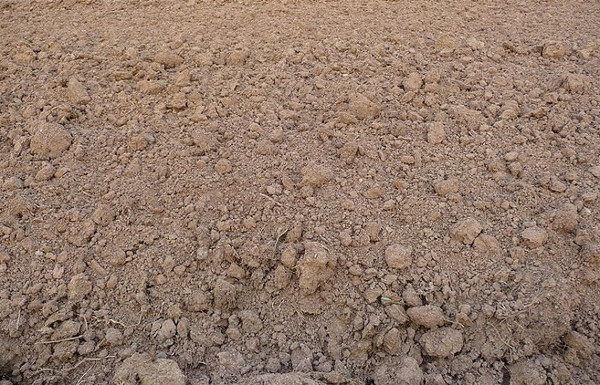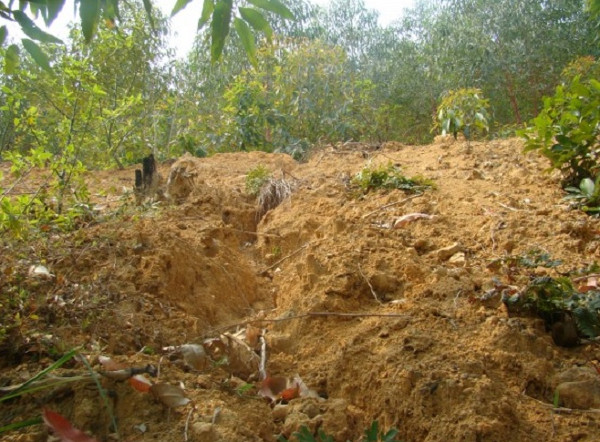The Earth is about to lose 1/3 of its food land
Recent scientific studies show that if there are no timely interventions, humans may lose one-third of food land in the near future.
The area of cultivated land in the world is seriously degraded
Soil is a valuable asset to produce food, absorb excess carbon and prevent erosion . but according to scientists' research, the surface soil is in danger of being partially lost in the future.

Farming land in the world is seriously declining.
The United Nations stipulates that 2015 is an international land year with a warning of 33% of the planet's land resources being degraded due to erosion, pollution, acidification and nutrient depletion (according to New Scientist). ). The main cause of this situation is due to the process of managing bad land of people. Unless we take timely measures, the land area per capita is only one quarter of 1960's by the end of this year.
In December this year, the United Nations will have an official report on the state of the world and the situation may be worse than the currently published figures. It is estimated that every minute we lose a cultivated area equivalent to 30 football fields and if we continue this momentum until 2075 we will almost no longer have land to cultivate.
Peter Groffman, a researcher at the Cary Institute of Ecosystem Studie, New York, said: "Many people think that land degradation is the biggest environmental threat to people ."
In addition to serving farming, the land is a solid wall against climate change. Bacteria and fungi in soil absorb carbon from plants and decomposed animal carcasses. According to Nature, soil can contain three times the amount of carbon compared to air.

Using synthetic fertilizers is one of the culprits causing soil erosion.
One of the culprits of soil erosion is the use of synthetic fertilizers that make soil acidic, salty and obstructing the activity of fungi, plant roots that help store carbon.
The United Nations believes that this can be improved by changing agricultural practices , shifting from monoculture to rotation and intensifying crops capable of replenishing soil nutrients.
You will be surprised to know that to form a 1cm thick layer of soil, it takes about 1000 years. Therefore, land resources for humans are extremely valuable and need to be planned for protection so that they can be used for a long time.
- A quarter of the world is degenerating
- What would happen if the Earth's sea and land swapped? Hell is full of centipedes waiting for you
- Cook food with microwaves that lose nutrients
- The Earth could have been
- Flies land on the cake and you continue to eat? Believe me you will never dare to do that anymore
- Africa has enough land to feed the world
- Will food war strike Earth in 2050?
- Lose weight ... avatar
- 'Reveal' the most beautiful land on Earth
- The most 'horror' land on Earth: Only one minute out in the world is lost!
- Save the Earth, NASA plans to land on an asteroid
- Video: The process of making the Earth's crust lose a lot of gold and silver
 Is the magnetic North Pole shift dangerous to humanity?
Is the magnetic North Pole shift dangerous to humanity? Washington legalizes the recycling of human bodies into fertilizer
Washington legalizes the recycling of human bodies into fertilizer Lightning stone - the mysterious guest
Lightning stone - the mysterious guest Stunned by the mysterious sunset, strange appearance
Stunned by the mysterious sunset, strange appearance The world's shortest national border is only 85 meters long
The world's shortest national border is only 85 meters long  Using straw turns saline soil into fertile agricultural land
Using straw turns saline soil into fertile agricultural land  The most tragic creature: It took 300 million years to climb to land, but the journey ended at the dinner table
The most tragic creature: It took 300 million years to climb to land, but the journey ended at the dinner table  Virtual land 'unhabitable' sold for a record $ 2.4 million
Virtual land 'unhabitable' sold for a record $ 2.4 million  Many investors subdivide and buy virtual land on Mars
Many investors subdivide and buy virtual land on Mars  Humans have ushered in a new geological era of the Earth
Humans have ushered in a new geological era of the Earth 